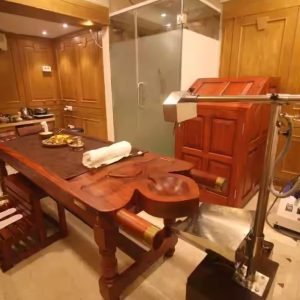Any physical or digital space where buyers and sellers can exchange items is called a marketplace. Because transactions occur in both ways, not just one, a marketplace’s business model is different from that of a retail store.
Almost any commodity can be bought and sold in a marketplace, including party supplies, toys for kids, sports equipment, and car components. Marketplaces come in various forms, which we’ll discuss in more detail later in this article.
Marketplaces are not limited to retail settings. They assist in supplying products in great demand to the consumers who are influencing market trends.
The surgical device marketplace is a diverse, forward-thinking, and growing sector. The need for medical devices is enormous worldwide and will continue to expand significantly in the coming years. Around 60–65 countries have established medical device rules or will do so soon [239]. The producers must define their intended markets and follow the rules correctly. Medical device harmonization is required on a worldwide scale for several reasons, including the following:
(1) to decrease regulatory obstacles;
(2) to facilitate commerce between nations; and
(3) to lower the cost of enforcing rules for governments and businesses.
Situation After COVID 19
The COVID-19 pandemic’s continuous spread has impacted manufacturers of medical equipment. The industry also confronts supply chain interruptions and other potential problems, such as financial limits and crises. This information emphasizes the risks associated with relying too much on imports in a market with few domestic rivals.
This opens up fresh research possibilities despite the present turmoil. The use of these instruments was mainly restricted to medical facilities that handled numerous patients at once before the invention of medical devices and processes. These devices are already popular in smaller healthcare facilities due to COVID-19 standards. Home healthcare is becoming more popular, driving up demand for at-home medical equipment.
Limitation and Challenges
Due to India’s large population and favorable regulatory environment, medical device makers are keen to establish a production site there. In 2017, new medical device regulations were implemented, containing updates consistent with international norms. Risk-based regulation was implemented, and licenses were issued for medical device production, marketing, and use.
This procedure has reduced regulatory requirements, which has saved time and money. The industry supports the move to regulate all medical devices, although stakeholders have reservations regarding the registration procedure. Poor registration procedures can harm patients’ safety and health by causing a lack of surgical device marketplace and sales losses for medical equipment manufacturers.
The nation must maintain a dynamic atmosphere for its manufacture of surgical devices marketplace in the post-pandemic age despite the substantial medical equipment possibilities. Long-term support is necessary for this business to have a bright future.
Training and capacity-building should be the main objectives of the Indian medical equipment business. The second objective is to make the needs and supply side of the medical device accessible and participatory. The medical device business has much more capacity to grow with a varied ecosystem of players, including medical devices, academia, and the government. Innovation, R&D, and development should be the roadmap’s objectives. In India people are vising self registration.cowin.gov.in to get vaccinated, and it really helped to reduce the corona.
Conclusion
In the current environment and the post-COVID age, it is advised that the government continue collaborating with the private sector, investors, and universities to promote the medical device business.
The development of an effective ecosystem is essential for the long-term development of the medical device sector because it is still in its infancy. The accomplishment of these objectives will be facilitated by funding, particularly licensing, research, and innovation, in addition to regulatory and policy reforms. Increased confidence in the medical devices industry and better employment possibilities would result from a future-focused collaboration with India.





